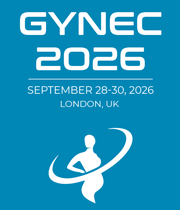Umbilicus
The umbilicus, or navel, is a small, hollow area located in the center of the abdomen that is the remnant of the umbilical cord. It is one of the few body parts that can be seen and touched on the outside of the body. The umbilicus is important for fetal development because it is the main source of nutrition and oxygen for the fetus. After birth, the umbilicus no longer serves a vital role and typically heals within a few weeks. The umbilicus can be subject to certain medical conditions such as umbilical hernias, which occur when the intestines or abdominal fat protrude through the umbilicus due to a weak spot in the abdominal wall. Other conditions include umbilical granulomas, which are small, red bumps that form at the base of the umbilicus and can cause irritation and pain. In some cultures, the umbilicus is thought to symbolize the connection between a mother and her child and is believed to have spiritual and emotional significance. The umbilicus is also sometimes referred to as the "third eye" or "center of life" due to its importance in fetal development.

Neda Zarrin-Khameh
Baylor College of Medicine, United States
Marlen Sulamanidze
Total Charm Clinic, Georgia
Mohamed M Hosni
London North West University Healthcare NHS Trust, United Kingdom
Neda Zarrin-Khameh
Baylor College of Medicine, United States
Marlen Sulamanidze
Total Charm Clinic, Georgia
Mohamed M Hosni
London North West University Healthcare NHS Trust, United Kingdom




Title : Evaluate the changes in SP-D levels in plasma during different phases of the menstrual cycle recruited from the Well- Adult Surfactant Protein Study (WASP)
Natnicha Kitti udom, University College London, Thailand
Title : Synergistic antifibrotic potential of protocatechuic acid and D-Carvone in liver protection
Ling Yin, Hefei Comprehensive National Science Center, China
Title : Pathologic findings in women with atypical glandular cells on Pap test
Neda Zarrin-Khameh, Baylor College of Medicine, United States
Title : Non-ablative radiofrequency for pelvic floor dysfunction and female intimate anti-aging: a 6-month prospective multi-centre cohort objectiv
Shaadaiti Wufuer, First Affiliated Hospital of Xinjiang Medical University, China
Title : Benign gynecological conditions and lifetime contraceptive patterns: a population-based analysis of the 2022–2023 national survey of family growth
Mayi Gnofam, Stony Brook University, United States
Title : Hysteroscopic endometrial resection with resectoscope versus Novasure ablation: A look at patient satisfaction with treatment of abnormal uterine bleeding and rates of progression to hysterectomy
Genevieve Kan, West Gippsland Healthcare Group, Australia